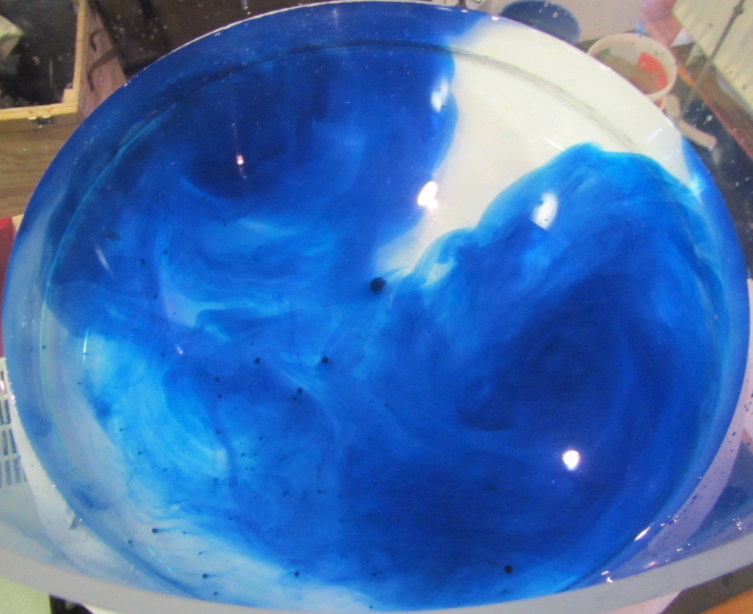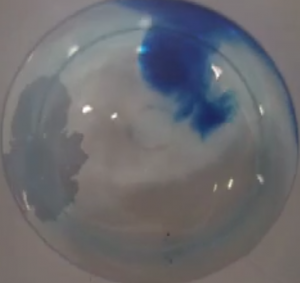
The effects of rotation on a collapsing column
Comparing a rotating and non-rotating dipole.
I just realized that I never explicitly showed the difference between rotation and no rotation, even though I do have the footage to do so: Two experiments set up to create a monopole, which both turned dipole.
In the non-rotating experiment (which was, by the way, set up carefully in preparation for a rotating experiment, but then the v-belt on the rotation table failed [but luckily this was on the last night of the JuniorAkademie, so we had otherwise run everything we had been planning to run], so we ended up with a non-rotating experiment), the dipole shown below develops within seconds of the central dense column being released.
In the rotating experiment, however, this is what the dipole looks like after a similar amount of time:
And we see that in the non-rotating case, the eddies are spreading to fill the whole width of the tank within seconds, whereas in the rotating case the eddies mainly stay confined into their respective columns. This is the often quoted phenomenon of conservation of vorticity in a rotating system, where movements happen mostly in the horizontal plane, whereas in non-rotating system, vertical movements happen easily, too (i.e. the dense water from the upper part of the initial dense column can sink to the bottom of the tank in this case, which it could not do in the rotating case), and turbulence can hence develop in 3D and not only 2D.
For videos of both experiments, please check out the posts on the rotating case and the non-rotating case.


Why do we need a rotating tank to study ocean and atmosphere dynamics? A demonstration | Dr. Mirjam S. Glessmer says:
[…] Images for this post were originally posted in this post (and in other posts linked therein) 5 years ago. Hoping we’ll have new images soon when our […]